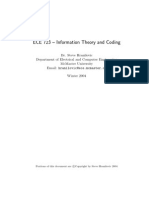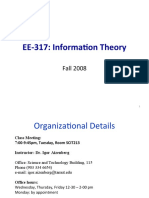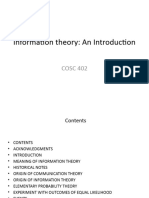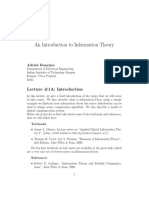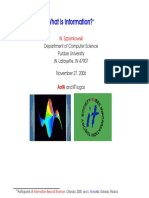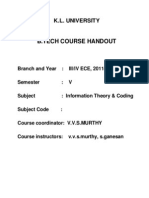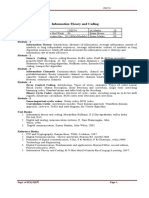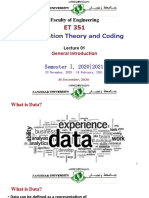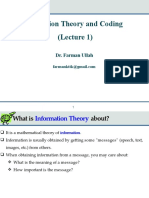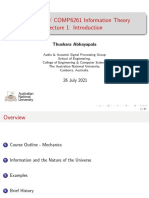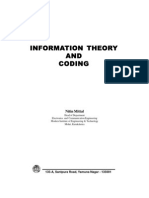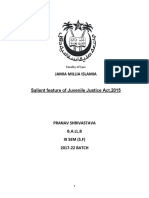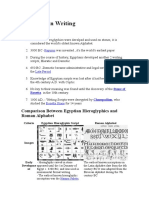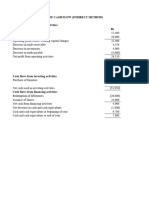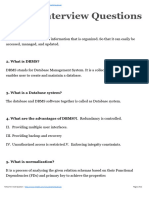0% found this document useful (0 votes)
22 views19 pagesLecture 1
The document outlines the introduction to a course on Information Theory, taught by Dr. Yao Xie at Duke University. It covers key concepts such as data compression, reliable data transmission, and fundamental theorems by Shannon, along with course logistics including schedule, grading, and prerequisites. The course aims to provide a foundational understanding of information theory and its applications in various fields.
Uploaded by
mennatalah777Copyright
© © All Rights Reserved
We take content rights seriously. If you suspect this is your content, claim it here.
Available Formats
Download as PDF, TXT or read online on Scribd
0% found this document useful (0 votes)
22 views19 pagesLecture 1
The document outlines the introduction to a course on Information Theory, taught by Dr. Yao Xie at Duke University. It covers key concepts such as data compression, reliable data transmission, and fundamental theorems by Shannon, along with course logistics including schedule, grading, and prerequisites. The course aims to provide a foundational understanding of information theory and its applications in various fields.
Uploaded by
mennatalah777Copyright
© © All Rights Reserved
We take content rights seriously. If you suspect this is your content, claim it here.
Available Formats
Download as PDF, TXT or read online on Scribd
/ 19


